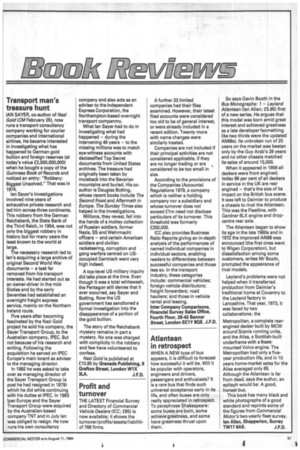Atlantean in retrospect
Page 59

If you've noticed an error in this article please click here to report it so we can fix it.
WHEN A NEW type of bus appears, it is difficult to forecast how successful it will be. Will it be popular with operators, engineers and drivers, passengers and enthusiasts? It is a rare bus that finds such universal acceptance early in its life, and often buses are only really appreciated in retrospect. To paraphrase Shakespeare: some buses are born, some achieve greatness, and some have greatness thrust upon them. So says Gavin Booth in the Bus Monographs: 1 — Leyland Atlantean (Ian Allan; £5.95) first of a new series. He argues that this model was born amid great interest and achieved greatness as a late developer something like two thirds were the updated AN68s). Its unbroken run of 25 years on the market was beatan only by the Guy Arab's 28 years and no other chassis matched its sales of around 15,000.
When it appeared in 1956 all deckers were front engined; today 86 per cent of all deckers in service in the UK are rear engined — that's the size of its impact on the British bus scene. It was left to Daimler to produce a chassis to rival the Atlantean. This was the Fleetline, with Gardner 6LX engine and dropcentre rear axle.
The Atlantean began to show its age in the late 1960s and in 1972 the improved AN68 was announced (the first ones went to Wigan Corporation), but dissatisfaction among some customers, writes Mr Booth, prompted the appearance of rival models.
Leyland's problems were not helped when it transferred production from Daimler's traditional home at Coventry to the Leyland factory in Lancashire. That year, 1973, it was faced by two collaborations: the Metropolitan, a complete rearengined decker built by MCW around Scania running units, and the Ailsa, a Scottish-built underframe with a frontmounted Volvo engine. The Metropolitan had only a fiveyear production life, and in 10 years home-market sales for the Ailsa averaged only 65. Although the Atlantean is far from dead, says the author, an epitaph would be: A good, honest bus.
This book has many black and white photographs of a good standard and reprints some of the figures from Commercial Motor's two-yearly fleet survey. Ian Allan, Shepperton, Surrey TW17 8AS. J.F.D.




















































































